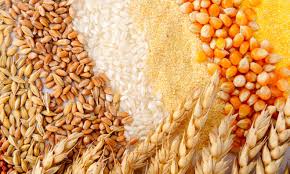Web Desk
The current marketing season i.e. 2017-18 should end with record inventory levels for wheat and maize following better-than-earlier-expected harvests, based on FAO’s latest forecasts.
“Global markets of all major cereals remain well balanced, supported by record inventory levels,” according to FAO’s new Cereal Supply and Demand Brief issued on Thursday.
The stocks-to-use ratio, a proxy for global supply buffers, is expected to rise to its highest level in 16 years.
FAO’s Food Price Index was nearly unchanged in January from the previous month and almost 3 percent below its level of a year ago, according to the food price report also released today.
Rome-based organization’s updated forecast for worldwide cereal production in 2017 now stands at 2 640 million tonnes, 1.3 percent higher than 2016 and an all-time record high.
The forecast has been raised by 13.5 million tonnes since December, with coarse grains driving the bulk of the increase, due largely to higher maize output expected in China, Mexico and the European Union.
FAO also raised its 2017 production forecasts for wheat, due to expectations of bigger harvests in Canada and the Russian Federation, and for rice, following an upward revision in China.
Projected cereal utilization in the 2017/18 season was also raised, now up 1.4 percent from 2016/17. The upward revision includes a notable jump for coarse grains, whose use for livestock feed is forecast to reach an all-time high on the back of sizable increases projected for Brazil, China, the EU and Mexico.
As cereal output is seen expanding more than utilization, stocks are projected to rise above their already high opening levels, leading to a comfortable world stocks-to-use ratio of 27.7 percent, the highest since 2001/02.
International trade volumes, meanwhile, are expected to contract slightly for all the major cereals except maize.
The FAO Food Price Index averaged 169.5 points in January, nearly unchanged from the previous month, as rising prices for staple grains and palm oil were offset by declining quotations for sugar, butter and cheese.
The FAO Cereal Price Index rose almost 2.5 percent from December, as the effect of large supplies was more than offset by concerns over weather and a weaker U.S. dollar. The index, which covers wheat, rice and coarse grains including maize, is 6.3 percent higher than its January 2017 level.















